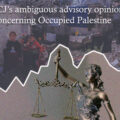Let us begin with the description of a real-life example of discrimination which recently happened to one visually impaired student. He is Bishwajit Boshak, a meritorious student of Bandorban Shualek High School. According to Prothom Alo, Bishwajit has recently this year passed the SSC examination obtaining GPA 4.28. Completing the online college admission procedure, he has also applied for admission in college and the Ministry of Education has selected Chittagong College for him to get admitted into. But the college administration is reluctant to admit Bishwajit on the ground that he is visually impaired. The same fate followed Al Amin, a student of Chittagong, who too is blind. Both of them are now left in serious doubt as to their continuation of studies despite completing secondary education competing with other regular classmates and proving their worth.
In Bangladesh, where approximately 17 million citizens are disabled according to World Health Organization (WHO), this sort of incident only expresses the continuing extreme vulnerability of these people. Questions arise, why does the circle of misfortune continue to deprive the persons with disabilities despite ample presence of laws and the efforts of the pressure groups to protect their rights and interests?
To find out answers to this question, the application of laws in combating such tragic ends needs to be known. Hence, this article brings forward a comparative analysis of structure and efficacy of previous and existing laws which are aimed to protect rights of the persons with disability. It will also present a brief overview of the latest law concerning their rights titled “The Disabled Persons Rights and Protection Act, 2013” to understand the available human rights and legal remedies provided for them.
In Part II of the Constitution of Bangladesh, Article 11 talks about a democratic republic where there will be respect for human dignity and fundamental human rights as well as freedom for all. The essence of this Article suggests that these respect and human rights are applicable for the handicapped persons who deserve protection of their dignity from the State. Though the Articles enumerated in this Part as Fundamental Principles of State Policy are not enforceable in a court of law, they nevertheless constitute basic structure of the Constitution of the People’s Republic of Bangladesh. Before enacting new legislation or before interpreting any provisions of law, as per Article 8, the legislature or the judiciary respectively must follow the guidelines spelled out in this Part II. Moreover, in Article 27 it is stated that everyone is equal before law while Article 28(4) states that the Government can enact special laws for the advancement of the backward section of citizens. Furthermore, Article 29(3)(a) allows the State to make special provisions in favour of any backward section of citizens for the purpose of securing their adequate representation in the service of Bangladesh. In addition, Article 42 guarantees right to property for all citizens. These are some of the fundamental rights ensured under the Constitution of Bangladesh, the breach of which gives the aggrieved person a right to seek remedy under Article 102 read with Article 44 by way of filing a writ petition in the Supreme Court of Bangladesh. Hence, it would not be incorrect to hold that these provisions of rights and principles are in same extent and content applicable for the persons with disability in protecting their rights under the constitutional mandate of our country.
Still discrimination against the handicapped people is very common. In BLAST vs. Bangladesh and others (Writ Petition No. 1783/98), Bangladesh Legal Aid Services Trust (BLAST) lodged a writ petition in 1998 challenging a circular of the Government of Bangladesh. That circular declared only 10% quota to be allotted for persons with disability for third and fourth class posts whereas in other cases 10% quota was allotted for all posts. Basically, this case emphasized that this circular was in violation of Article 27, 29, 31 and 42 of the Constitution of Bangladesh. This circular clearly showed the discriminatory attitude of the State towards the persons with disability from all spheres of life.
The situation started changing in Bangladesh when its Government ratified the United Nations Convention on the Rights of Persons with Disabilities (CRPD) in 2007. The Government in 2001 enacted a law titled The Welfare of the Persons with Disability Act. This 2001 Act had many loopholes starting from improper definition to punishment and insufficiency of accountability mechanism. It was incomplete and discriminatory, leaving the people with disabilities in vulnerable condition and making them subjected to discrimination in case of access to healthcare, education and even public services. In this context, the Government repealed the 2001 Act and enacted afresh The Disabled Persons Rights and Protection Act in 2013.
The most striking feature of this new Act is that it specifically defines various types of disability. Those are in Section 3 as follows: autism, physical and psychological disability, visual disability, speech disability, hearing disability, intellectual disability, cerebral palsy, down syndrome, multiple disability and other disabilities etc. Widening up the definition, this new law has now paved the way for access to justice to the people with all sorts of disabilities.
This latest Act incorporates as much as twenty-one rights for the disabled persons which are enshrined in its Section 16 and aims at eradicating the previous obstacles that the disabled persons had to undergo. Unlike the previous Act of 2001, Section 16 ensures equality before law, right to hereditament, accessibility, right to participate in a unified system of education, right to get protection from persecution, right to get National ID card, right to get included in voter list, right to participate in election and right to get employment. Sections 17-28 of this Act mention about various committees from central to local level, the very purpose of which is to ensure transparency and accountability in various stages of administration. In Section 29, the responsibilities of various private institutions and local authorities are enumerated in order to ensure easy enjoyment of the rights by the disabled persons. Another new addition, Section 31, provides for registration and identity card for disabled person which can surely work as an assurance that the disabled will get to enjoy their rights properly without any kind of inconvenience. But without smooth administrative process, this system can turn to become a problematic barrier in accessing the facilities as well.
A disabled person has to face maximum discrimination in the field of education and job. Sections 33-36 of the Act deal with these problems. Section 35 prohibits discrimination in work sectors on the ground of disability. Section 32 states that 5% seat shall be kept reserved in public vehicles for the disabled person, Section 33 states about non-discrimination on the ground of disability in educational institutions to an otherwise qualified candidate. Section 34 talks about easy access of disabled persons to public buildings must be ensured in accordance with the Building Construction Act, 1952 (East Bengal Act II of 1953).
According to Section 37, there is provision for punishment which will vary offence-wise and the inadequacy prevailing in the previous Act has been removed. The offences under this Act are non-cognizable, compoundable, and bailable. These are the most noteworthy features of this new Act which hopefully will eradicate the everyday hurdles of the persons with disabilities.
Theoretically, we get semblance of hope in comparing this legislation with the previous one; but we should remember that a law which fails to achieve its purpose, ultimately is nothing but a barren tree. Apparently the content of this new Act seems to us very positive, but without the actual implementation it is difficult to evaluate its effectiveness in essence. Though this Act has been enacted in the year 2013, till today many students with disabilities, just as we have referred to in the beginning of this article, are being discriminated. It is not always fault of the texts of law; other complicated factors contribute to such failure as well. Parochial thoughts of society, lack of knowledge about available facilities among the persons with disabilities and the common people, non-implementation of laws, ever existing poverty are few instances of those factors. Such an identification of the factors associated with discrimination suggests us to work for raising mass awareness, structuring educational and social system in a moderate and flexible way coupled with proper implementation of the existing legal provisions so that the deprivation of social and legal rights of the persons with disabilities can effectively be minimized.
Lastly, we should not forget that perhaps many, like Stephen Hawking, exist and live in our society. Proper nurturing can ensure their development and brighten the future of our country as a whole. A little bit of cautiousness, empathy and mutual respect towards the persons with disabilities can make our society an ideal one where students like Bishwajit Boshak and Al Amin can contribute towards advancement of the nation and become valuable assets indeed.
Citations:
K.M. Ashbarul Bari and Nusrat Jahan, “A Legal Assessment of the Rights of the Persons with Disability: Bangladesh Perspective” (DHLR Blog, 31 July 2015) http://dhakalawreview.org/blog/2015/07/rights-persons-with-disability-901









No Comments
Leave a comment Cancel